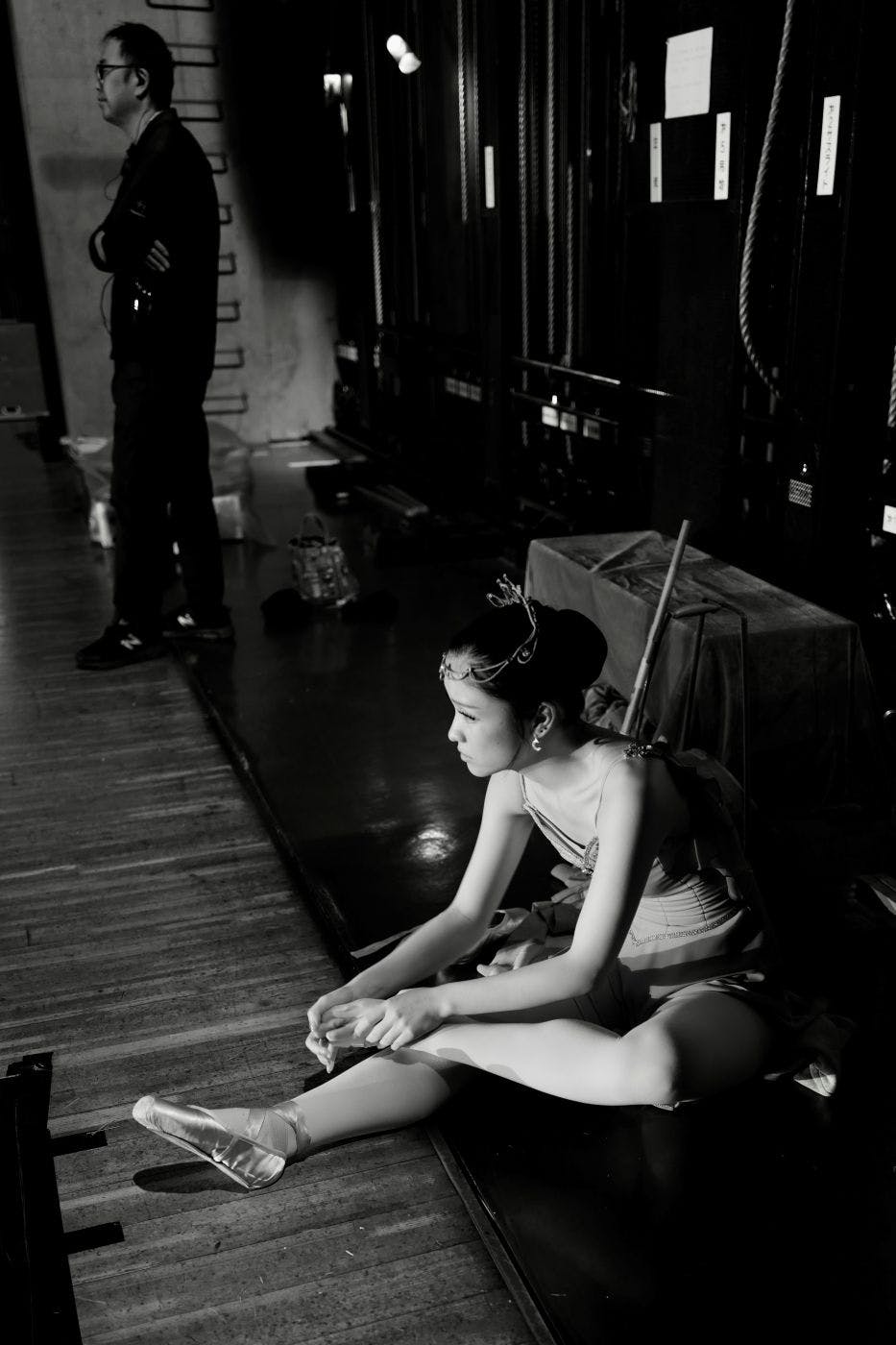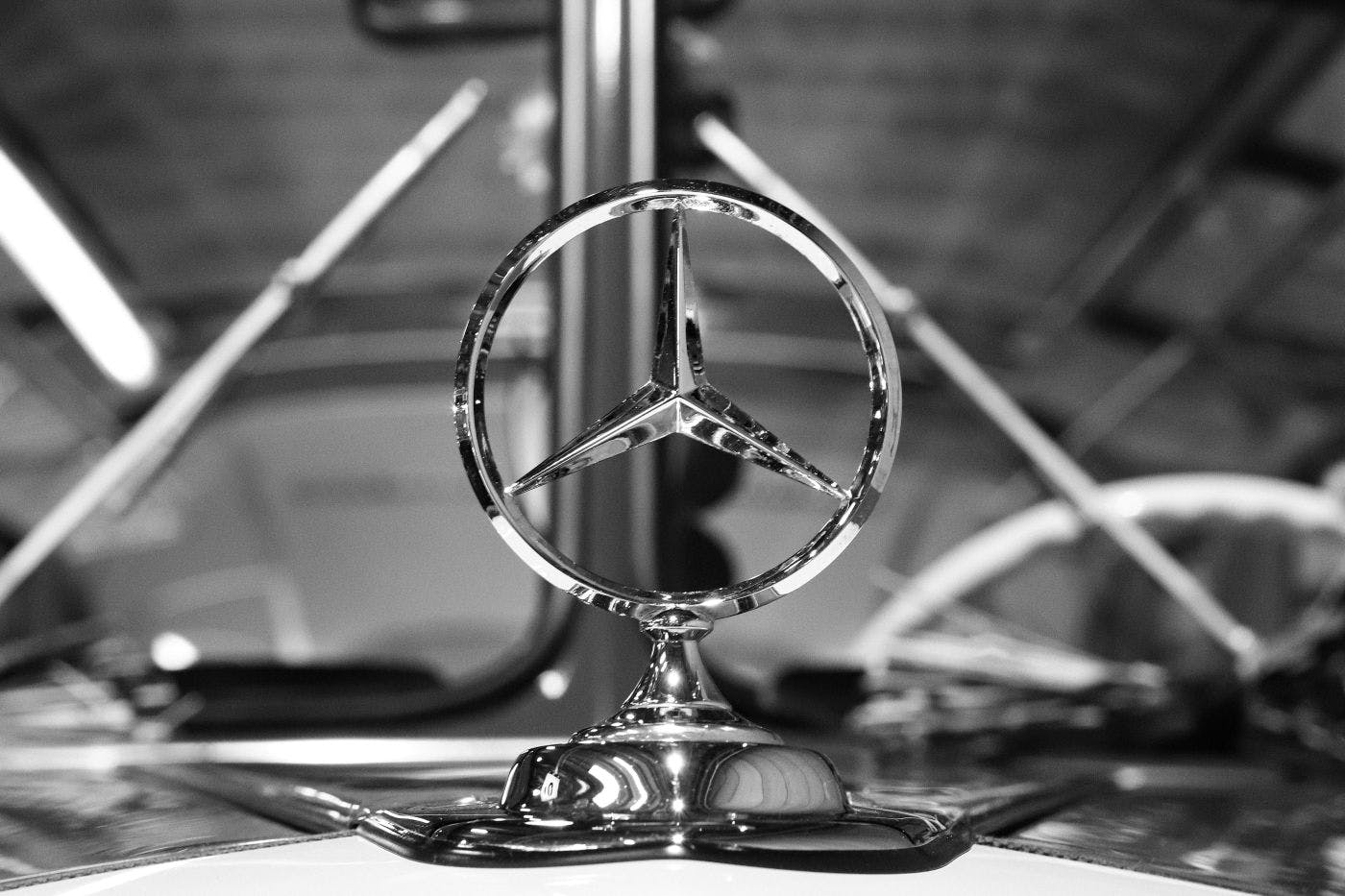

They glow up like humans do—with messy, awkward adolescence, questionable decisions, a few cringe-worthy moments, and then a decade of slow, steady transformation that suddenly looks effortless from the outside.
I recall a long time ago, an interview with John Voight. Someone asked him what it felt like, after Midnight Cowboy, to be this great, overnight success. I was sitting in housing at a theater where I was working, and one of the older actors who was in the company laughed at the question. “Overnight success,” he scoffed, “what a stupid question, John’s no overnight success.” He went on to tell us that he worked with John in summer stock and on stage all over the place. “John’s been sloggin' his ass through regional theater, he was on Broadway as Rolf in Sound of Music, he did a small part on TV, there is nothing overnight about his success. He worked hard, he trained right, and he earned it all.
The thing is, a majority of people didn’t see him on stage and only became familiar with him and his skill when he did Midnight Cowboy, so naturally, for most, he appeared overnight. There’s something about being called an overnight success that rubs actors the wrong way. It discounts the time and energy they have put into building their career. Overnight success sounds like a bucket of luck and a dash of right place, right time. It also has a subtle undertone of, You came out of nowhere, and you’ll return there soon.
To some, calling someone an overnight success may feel like a compliment, but it isn’t always the case. It can cheapen someone’s work and their lives. I always think of John Voight when I hear the term, and it makes me wonder. It extends beyond actors. Tech giants have heard it said about them; athletes, politicians, anyone who is in the public eye, it seemed to me, could be labeled, falsely most times, as an overnight success.
I still remember the first time I heard someone call a brand an “overnight success.” They said it like it was magic—a fairy-tale moment where the world suddenly noticed a product and sales exploded overnight. And I nodded, like I understood, while secretly thinking: Sure, if by “overnight” you mean ten years of obsession, awkward experiments, and stubbornly refusing to quit.
Because here’s the truth: brands don’t glow up by accident. They don’t wake up one morning and suddenly sparkle in a billion Instagram feeds. They glow up like humans do—with messy, awkward adolescence, questionable decisions, a few cringe-worthy moments, and then a decade of slow, steady transformation that suddenly looks effortless from the outside.
The brands we idolize—the ones everyone thinks “came out of nowhere”—actually spent years building something invisible but essential: their brand ecosystem. They experimented, failed, refined their voice, and made countless micro-choices that, over time, compounded into the thing people now envy. That’s the real story behind an overnight success.
And here’s the kicker: the lessons from these long journeys are the same lessons that can accelerate your own brand glow-up—without the painful decade-long detours (well… mostly).
So buckle up. Let’s dissect the illusion of overnight success, peek behind the curtain at the ten-year grind, and pull out the lessons that will make your brand shine—strategically, unapologetically, and in a way that actually sticks.

The Myth of Overnight Success
If you’ve ever watched a brand suddenly blow up on Instagram or heard about a “viral product,” it’s easy to assume it all happened in a flash. One post. One review. One lucky break. Poof—overnight success.
But here’s the thing: the brands that feel like they materialized out of thin air? They didn’t. Not really. They just became visible—finally.
Take Glossier, for example. On social media, it seemed like Emily Weiss had built an empire overnight, but behind the scenes, she had spent years cultivating an audience through her blog, Into The Gloss. She tested products, listened to her readers obsessively, and slowly refined her voice and aesthetic. When Glossier launched, it looked instant—but it was really a decade-long exercise in understanding your audience, perfecting your voice, and building trust.
Or Airbnb. Today, it seems like Brian Chesky and Joe Gebbia simply had a brilliant idea, pressed a button, and became global icons. But anyone who digs deeper sees years of scraping by, failed prototypes, exhausting networking, and relentless iteration. The “overnight success” narrative? Just the moment when their persistence finally intersected with public awareness.
Even Apple—the ultimate case study—didn’t explode overnight with the iPhone. Apple had been experimenting with design, messaging, and ecosystem-building for decades. Every seemingly sudden breakthrough was built on the quiet accumulation of countless small decisions that, together, created the perception of instant success.
The pattern is clear: “overnight success” is a perception, not a reality. What outsiders see is the polished moment of breakthrough. What insiders know is the years of slog, trial, and incremental progress that made it possible.
Why does this happen?<br />Humans are wired to see patterns in results, not the messy paths behind them. We notice the endgame and ignore the groundwork. The press loves a good “overnight” story because it’s simple and digestible. Investors, consumers, and even aspiring entrepreneurs latch onto it because it’s aspirational. But for the people doing the work, it’s frustrating—and sometimes infuriating.
And that’s where your brand’s glow-up comes in. Understanding the myth of overnight success allows you to see the real roadmap. You start to value persistence over luck, strategy over random virality, and small, consistent moves over dramatic, flashy gestures.
And that’s the thing about these “overnight successes”—the truth is almost always hidden in plain sight. What looks like magic on the outside is actually the slow burn of persistence, experimentation, and tiny, almost invisible choices stacking up over time. You notice the moment a brand explodes, but you rarely see the years of refining a product, testing messaging, or figuring out which story resonates with people.
That’s why patience becomes your secret weapon. The brands that seem to arrive fully formed didn’t skip steps—they just stayed the course when no one was watching. They iterated constantly, celebrated small wins, learned from failures, and built trust piece by piece. In other words, the glow-up isn’t a single leap; it’s a series of micro-moves that compound into something remarkable. And when the world finally notices, it looks effortless—because the groundwork has already been laid, carefully, deliberately, over years.

The Hidden Work Behind the Glow-Up
If the first section was about the illusion of overnight success, this one is about the reality: the slog, the experiments, the awkward adolescence of a brand before anyone notices. And yes, it can be messy, hilarious, frustrating—and totally necessary.
Take Patagonia, for example, because I NEVER use them as an example. Today, it’s a brand synonymous with environmental activism and outdoor adventure, and its products are coveted by loyal fans worldwide. But Patagonia didn’t become a cultural icon overnight. For years, Yvon Chouinard was just a guy making climbing gear in small batches, learning from mistakes, and slowly figuring out how to communicate his vision. There were misfires—equipment that failed, marketing that flopped, campaigns that didn’t resonate. Each “failure” was really a lesson in disguise, a micro-step toward the brand we recognize today.
It’s the same story for Glossier. Before their breakout product hits, there were hundreds of prototypes, endless focus groups, and countless tweaks to packaging, copy, and tone. Every blog post, social media engagement, and community interaction was a tiny brushstroke in the bigger painting of their brand identity. No one outside the inner circle saw it, but it was happening, day after day, quietly compounding into the recognition that looked sudden to the world.
Even small, niche brands follow this pattern. I’ve seen startups stumble, pivot, scrap products, relaunch with a new name, and still keep pushing because they believed in the long game. That “overnight success” moment might come after ten years of near invisibility, but by then, every little move had been calculated to support that breakthrough.
And let’s not forget the human element. Behind every brand, there are people learning, failing, iterating, and sometimes questioning if it’s worth continuing. They’re building skills, systems, and processes, often without applause. But here’s the secret: those years of quiet labor are exactly what allow a brand to explode when timing and opportunity finally align.
The hidden work is also deeply strategic. It’s not just “doing stuff” for the sake of being busy—it’s crafting a brand ecosystem:
- Understanding your audience on a granular level.<br />
- Refining your voice so it feels authentic and consistent.<br />
- Testing channels, offers, and messaging until you find what sticks.<br />
- Building partnerships, collaborations, and networks that amplify your reach.<br />
All of these micro-decisions stack up over time, creating the conditions for that seemingly magical moment when the world finally notices your brand. It’s painstaking, often invisible work—but without it, a “glow-up” is impossible.
And that’s the takeaway: if you want your brand to shine, you have to embrace the grind. The years of quiet effort, strategic tinkering, and incremental growth are not a detour—they’re the main road. And when the world finally sees your work, it’ll feel effortless, even though you know the sweat, mistakes, and late nights that built it.

Translating the Hidden Work into Your Brand Glow-Up
So, you’ve seen it: the decades of invisible labor, the trial-and-error, the awkward adolescence of brands before they “glow up.” Now the question is: how do you take that hidden work and turn it into something actionable for your own brand—without wandering around for ten years in the dark?
The first thing to understand is that every glow-up is intentional. It may look like luck to outsiders, but it’s the product of deliberate, consistent choices. You can’t shortcut authenticity, and you can’t fake the cumulative effect of small, smart moves. But you can be strategic about what those moves are.
Start with the foundation.<br />A brand glow-up begins with clarity: who are you, who are you for, and why do you matter? Every brand that eventually seemed to explode had this nailed—or at least had a working version they refined over time. Take Apple, for instance. For years, they weren’t just building products—they were building a story of simplicity, elegance, and empowerment. Every design decision, marketing campaign, and retail experience reinforced that story. Your brand ecosystem starts the same way: define your core values, your voice, and your promise to your audience—and make every choice reinforce it.
Iterate like your brand depends on it—because it does.<br />The hidden work of brands is all about testing and learning. Not everything will work, and that’s okay—it’s actually essential. Each failure is data, each misstep a guidepost. Glossier didn’t hit it right the first time; Patagonia didn’t either. They both iterated relentlessly, learning what resonated, what felt authentic, and what built trust. Your glow-up comes from embracing that process: try, measure, adjust, repeat.
Micro-moves compound into macro-results.<br />Think of your brand like a bank account. Every thoughtful post, every carefully crafted touchpoint, every consistent customer experience is a deposit. You won’t see the balance grow immediately—but over time, it compounds. That’s how a brand goes from unnoticed to irresistible. The magic moment—the “overnight” moment—is just the first time the world sees the results of those years of micro-investments.
Leverage visibility strategically.<br />You don’t need to be everywhere at once. The most successful glow-ups come from brands that carefully choose how and where they’re seen, making sure every exposure aligns with their ecosystem. Early on, you’re experimenting and figuring out where your audience lives and how they engage. Later, you amplify what works, using the credibility and momentum you’ve built to accelerate recognition.
Keep your long-term story in mind.<br />Every successful brand has a narrative, even if outsiders don’t see it. Your story isn’t just the tagline or the logo—it’s the sum of your choices, your voice, and the way you show up over time. Glossier had a story before it had products. Patagonia had a story before it had global recognition. Your glow-up starts by knowing your story and making sure every step you take reinforces it.
And here’s the liberating part: while your brand may not explode overnight, you can accelerate the process by being intentional. By thinking strategically about iteration, compounding micro-moves, and your brand ecosystem, you create the conditions for a glow-up that’s not only fast—but sustainable. No shortcuts. No illusions. Just strategy, persistence, and a little creative audacity.

Mini Case Studies of Strategic Brand Glow-Ups
Nothing drives a point home like seeing theory in action. Let’s look at a few brands that seemed to explode overnight—but in reality, meticulously built their glow-up over years of strategic work.
1. Glossier – From Blog to Beauty Empire<br />When Emily Weiss started Into The Gloss, no one called it a brand—it was just a blog. But she was already practicing the brand glow-up blueprint without even knowing it. She engaged readers personally, learned what resonated, and experimented with content and products. By the time Glossier launched, it wasn’t just a beauty line—it was a community-driven ecosystem with a clearly defined voice. The “overnight” moment? Everyone saw it, but the real magic had been brewing for years, one post, comment, and prototype at a time.
Lesson: Start small, iterate, and build your audience first. The foundation matters more than a flashy launch.
2. Airbnb – From Desperation to Global Recognition<br />Brian Chesky and Joe Gebbia famously struggled to get traction early on. They tried different approaches, pitched in person, and redesigned listings multiple times. They even sold cereal boxes to fund their startup. The “overnight success” of Airbnb came after years of refining the product, messaging, and customer experience. By the time the press took notice, the groundwork had already been laid.
Lesson: Resourcefulness and iteration are part of the hidden work. Don’t fear small, creative experiments—they compound into credibility.
3. Patagonia – Slow-Burn Credibility<br />Patagonia didn’t start as the cultural icon it is today. Yvon Chouinard spent years perfecting gear, learning his audience, and aligning the brand with a clear mission: environmental stewardship. Every campaign, every product, every story reinforced the brand’s identity. The public’s perception of “overnight authority” was decades in the making.
Lesson: Alignment between mission, product, and messaging compounds trust over time. The glow-up happens when consistency meets visibility.
4. Dollar Shave Club – Viral Launch, Strategic Foundation<br />Dollar Shave Club might be the textbook “viral hit” example. That launch video spread like wildfire, making it look like instant fame. But before the video went public, they had spent months testing product-market fit, building their subscription model, and figuring out brand voice. The virality was the tip of the iceberg—the underlying systems and strategy made it scalable.
Lesson: A moment of visibility is only as powerful as the infrastructure behind it. Build systems that can handle the spotlight.
The Lesson from the Mini Case Studies<br />Across all these examples, the pattern is clear: “Overnight” success is never a random stroke of luck. It’s a deliberate, consistent, and often painstaking series of choices, experiments, and micro-moves. What makes it look effortless is the invisible labor behind it—years of thinking, testing, refining, and showing up even when no one is watching.
If you take one thing from these stories, it’s this: your brand glow-up is a marathon, not a sprint. The secret isn’t in luck—it’s in strategy, persistence, and a willingness to do the messy work that nobody sees.
The Takeaway
Here’s the truth: brands don’t glow up overnight. Not really. What looks like magic is usually years of strategy, experimentation, and relentless persistence. Every post, prototype, partnership, and pivot is a micro-move that compounds over time. The “overnight” moment? That’s just the world finally noticing the results of all the invisible work.
If there’s one lesson from the stories we’ve explored—John Voight, Glossier, Airbnb, Patagonia, Dollar Shave Club—it’s this: you can’t skip the messy, invisible work, but you can make it intentional. That’s the ThoughtLab approach: we help brands see the entire ecosystem, identify the moves that compound, and build strategies that accelerate the glow-up—without cutting corners or chasing illusions of instant success.
So don’t get distracted by the glitter of perceived overnight success. Focus on the slow, strategic, deliberate work that builds a brand that lasts. Show up consistently, make smart choices, iterate relentlessly, and nurture your ecosystem. In time, the world will notice—and when it does, it will feel effortless. But you’ll know the truth: the glow-up was never about luck. It was about strategy, persistence, and playing the long game.
